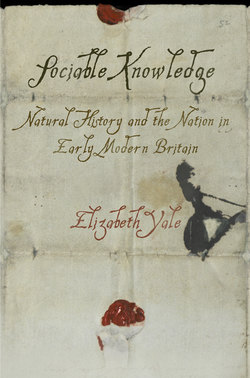Sociable Knowledge

Реклама. ООО «ЛитРес», ИНН: 7719571260.
Оглавление
Elizabeth Yale. Sociable Knowledge
Отрывок из книги
Sociable Knowledge
Series Editors
.....
Topographical writers’ understandings of the ancient British and estimations of their contributions to the formation of Britain and the British landscape ranged from utterly dismissive to proudly appreciative. In The most notable antiquity of Great Britain vulgarly called Stone-Heng (1655), the first printed treatise on Stonehenge, the architect Inigo Jones argued that the ancient British peoples were entirely too rude and barbarous to have constructed a monument as complex as Stonehenge. Jones’s book offered a particularly striking example of the link between English estimations of the ancient Britons and English prejudices against the “Celtic” peoples of early modern Britain.51 According to Jones, the ancient Britons were utterly devoid of the understanding of art, science, or mathematics that would have equipped them to build Stonehenge.52 Instead, Jones contended (totally wrongheadedly) that the Romans constructed Stonehenge according to classical architectural principles. John Aubrey, on the other hand, writing at roughly the same time, identified Stonehenge as a Druid temple, defining his Druids as “the most eminent Priests [or Order of Priests] among the Britaines.”53 Aubrey, who claimed Welsh ancestry, saw affiliations between similar ruins scattered across Britain. He sought out and where possible incorporated accounts of ancient British monuments in North Wales and Scotland into Monumenta Britannica, his study of British antiquities.54 Aubrey’s interpretation of stone circles as Druid temples became immensely popular through the eighteenth century when it was promoted by the antiquaries William Stukeley and William Borlase.55
In political history as well, opinions of the ancient British were neither wholly negative nor wholly positive, though over time this field turned more decisively away from them as progenitors of the English constitution. Earlier writers had made the argument that Britain’s foundations could be located among the ancient Britons, shrouded in time immemorial. However, by the late seventeenth century, historians, especially those of the proparliamentary and Whiggish type, came to believe that the Saxons were the true progenitors of English liberties. This argument, which was founded in a century of increasingly sophisticated antiquarian scholarship on Saxon England, had been popularly made in Nathaniel Bacon’s oft-reprinted An historicall discourse of the uniformity of the government of England, which was first published in 1647.56 Those on the Royalist side of things, on the other hand, tended to emphasize more the inheritance from the Normans. Even those who still sought to locate the foundations of English liberties in ancient Britain argued that little could be known about their governance, given the lack of surviving written documents. Regardless of which side one took, the shift to seeing the transfer of power from Saxons to Normans as a key moment in the history of the English constitutions led English writers to minimize the contribution that the Welsh made to the national polity, both as a people in the then present day and in their past incarnation as the ancient British.57 Not coincidentally, these arguments had a topographical basis: the boundaries of the medieval Saxon and Norman territories mostly mapped onto present-day England, which meant that the English claimed a direct line of descent from these peoples, but not the ancient Britons, whose descendants lived in Wales, Ireland, and Scotland.58
.....